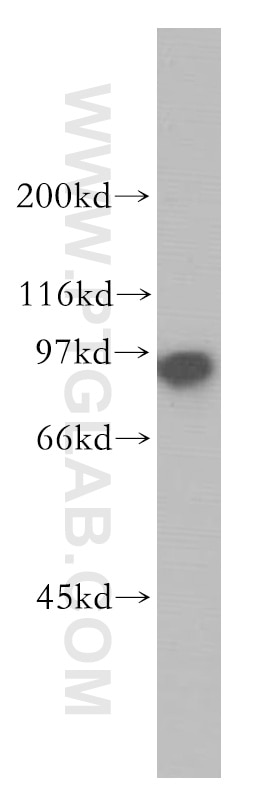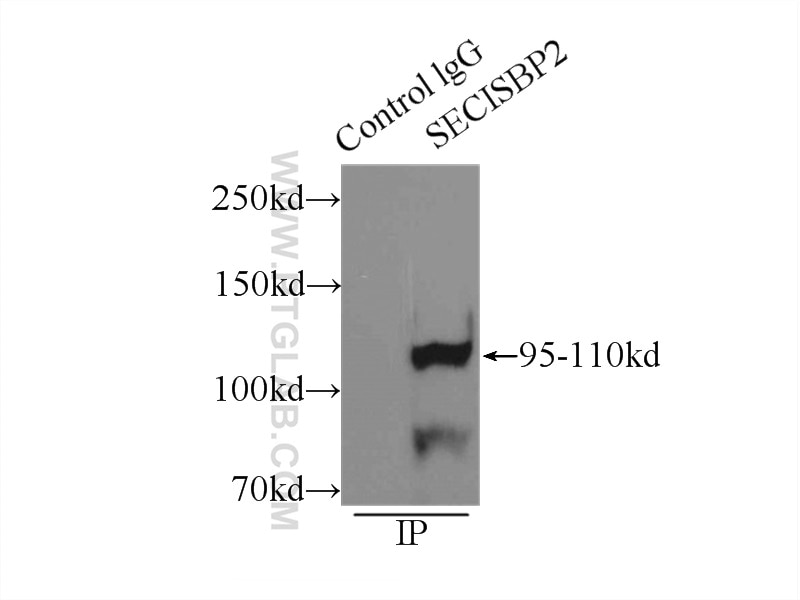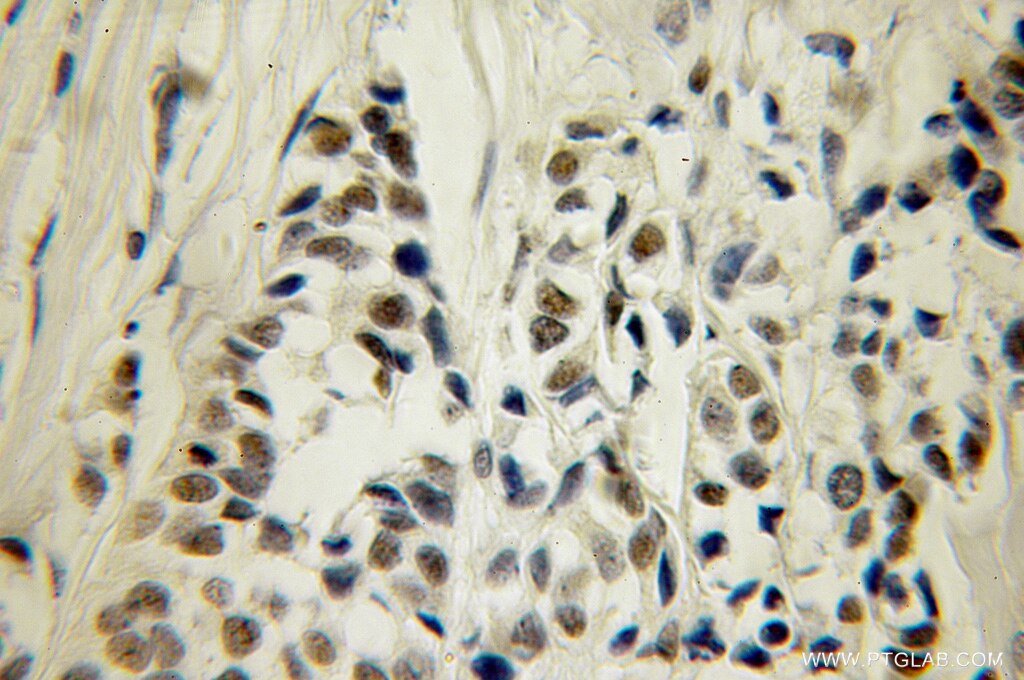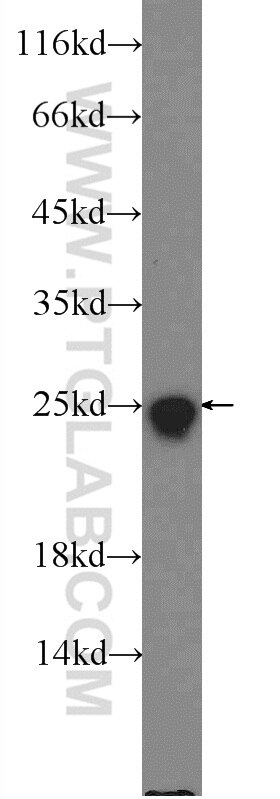- Phare
- Validé par KD/KO
Anticorps Polyclonal de lapin anti-SECISBP2
SECISBP2 Polyclonal Antibody for WB, IP, IF, ELISA
Hôte / Isotype
Lapin / IgG
Réactivité testée
Humain, rat, souris et plus (1)
Applications
WB, IHC, IF/ICC, IP, ELISA
Conjugaison
Non conjugué
N° de cat : 12798-1-AP
Synonymes
Galerie de données de validation
Applications testées
| Résultats positifs en WB | cellules HeLa, cellules Jurkat, tissu rénal humain |
| Résultats positifs en IP | tissu testiculaire de souris |
| Résultats positifs en IF/ICC | cellules HeLa |
Dilution recommandée
| Application | Dilution |
|---|---|
| Western Blot (WB) | WB : 1:500-1:2000 |
| Immunoprécipitation (IP) | IP : 0.5-4.0 ug for 1.0-3.0 mg of total protein lysate |
| Immunofluorescence (IF)/ICC | IF/ICC : 1:20-1:200 |
| It is recommended that this reagent should be titrated in each testing system to obtain optimal results. | |
| Sample-dependent, check data in validation data gallery | |
Applications publiées
| KD/KO | See 6 publications below |
| WB | See 14 publications below |
| IHC | See 1 publications below |
| IF | See 4 publications below |
Informations sur le produit
12798-1-AP cible SECISBP2 dans les applications de WB, IHC, IF/ICC, IP, ELISA et montre une réactivité avec des échantillons Humain, rat, souris
| Réactivité | Humain, rat, souris |
| Réactivité citée | rat, Humain, poisson-zèbre, souris |
| Hôte / Isotype | Lapin / IgG |
| Clonalité | Polyclonal |
| Type | Anticorps |
| Immunogène | SECISBP2 Protéine recombinante Ag3541 |
| Nom complet | SECIS binding protein 2 |
| Masse moléculaire calculée | 854 aa, 95 kDa |
| Poids moléculaire observé | 95 kDa |
| Numéro d’acquisition GenBank | BC036109 |
| Symbole du gène | SECISBP2 |
| Identification du gène (NCBI) | 79048 |
| Conjugaison | Non conjugué |
| Forme | Liquide |
| Méthode de purification | Purification par affinité contre l'antigène |
| Tampon de stockage | PBS avec azoture de sodium à 0,02 % et glycérol à 50 % pH 7,3 |
| Conditions de stockage | Stocker à -20°C. Stable pendant un an après l'expédition. L'aliquotage n'est pas nécessaire pour le stockage à -20oC Les 20ul contiennent 0,1% de BSA. |
Informations générales
Selenium (Se) is an essential trace element required for the biosynthesis of selenoproteins, and selenocysteine insertion sequence (SECIS) binding protein 2 (SECISBP2, or SBP2) represents a key trans-acting factor for the cotranslational insertion of selenocysteine into selenoproteins. Defects in SBP2 are a cause of abnormal thyroid hormone metabolism (ATHYHM) associated with a reduction in type II iodothyronine deiodinase activity. Mutations in this gene have been associated with a reduction in activity of a specific thyroxine deiodinase, a selenocysteine-containing enzyme, and abnormal thyroid hormone metabolism. Cells depleted of SBP2 have increased levels of ROS, which lead to cellular oxidative stress manifested as DNA lesions, stress granules, and lipid peroxidation, induction of caspase- and cytochrome c-dependent apoptosis, indicating that SBP2 is required for protection against ROS-induced cellular damage and cell survival.
Protocole
| Product Specific Protocols | |
|---|---|
| WB protocol for SECISBP2 antibody 12798-1-AP | Download protocol |
| IF protocol for SECISBP2 antibody 12798-1-AP | Download protocol |
| IP protocol for SECISBP2 antibody 12798-1-AP | Download protocol |
| Standard Protocols | |
|---|---|
| Click here to view our Standard Protocols |
Publications
| Species | Application | Title |
|---|---|---|
Science SELENOPROTEINS. CRL2 aids elimination of truncated selenoproteins produced by failed UGA/Sec decoding. | ||
Nat Chem Biol Ribosome stalling during selenoprotein translation exposes a ferroptosis vulnerability. | ||
Nucleic Acids Res Identification of a novel endogenous long non-coding RNA that inhibits selenoprotein P translation. | ||
Free Radic Biol Med Selective up-regulation of human selenoproteins in response to oxidative stress. | ||
Endocrinology Thyroid Hormone Metabolism Defects in a Mouse Model of SBP2 Deficiency.
| ||
J Biol Chem Interplay between Selenium Levels, Selenoprotein Expression and Replicative Senescence in WI-38 Human Fibroblasts. |












